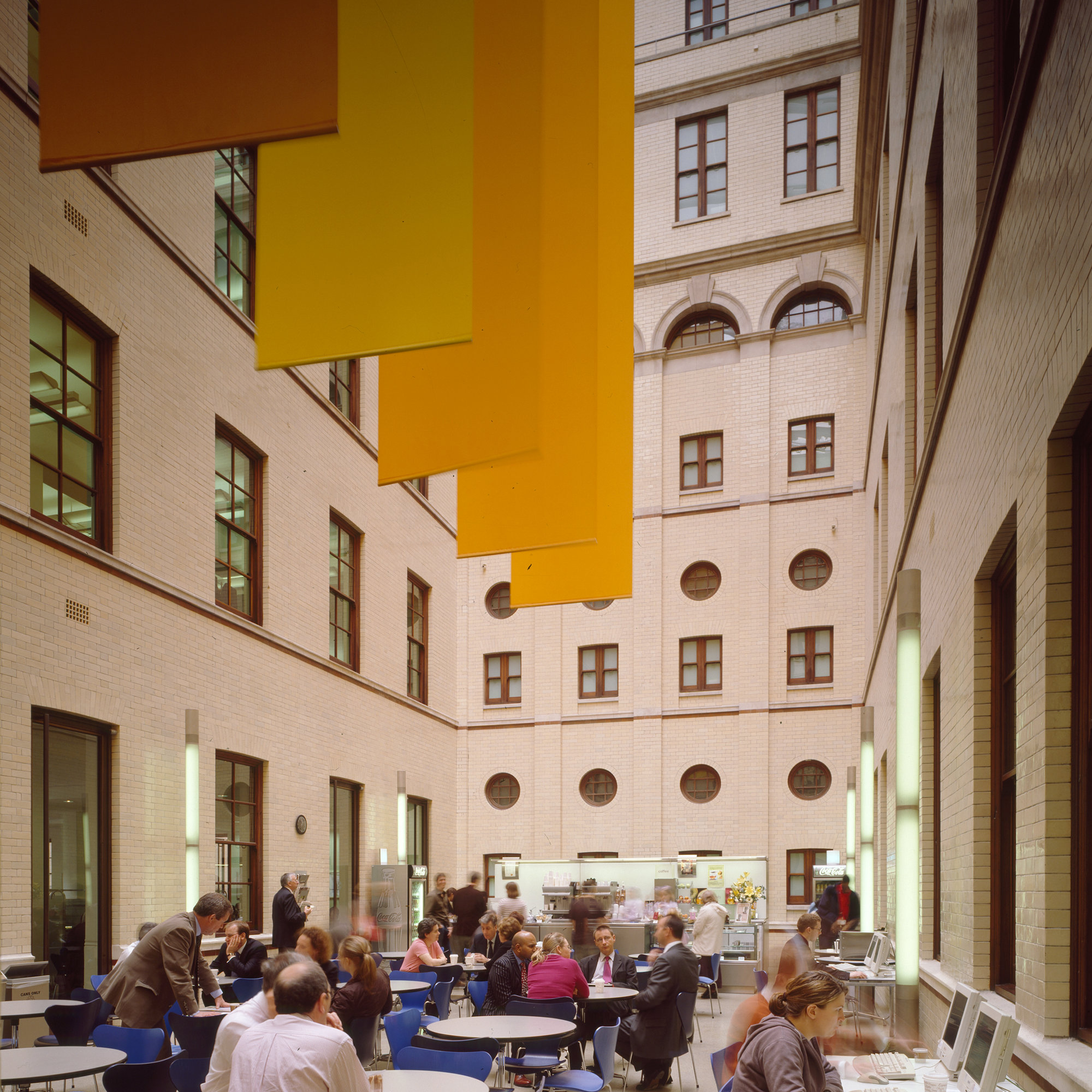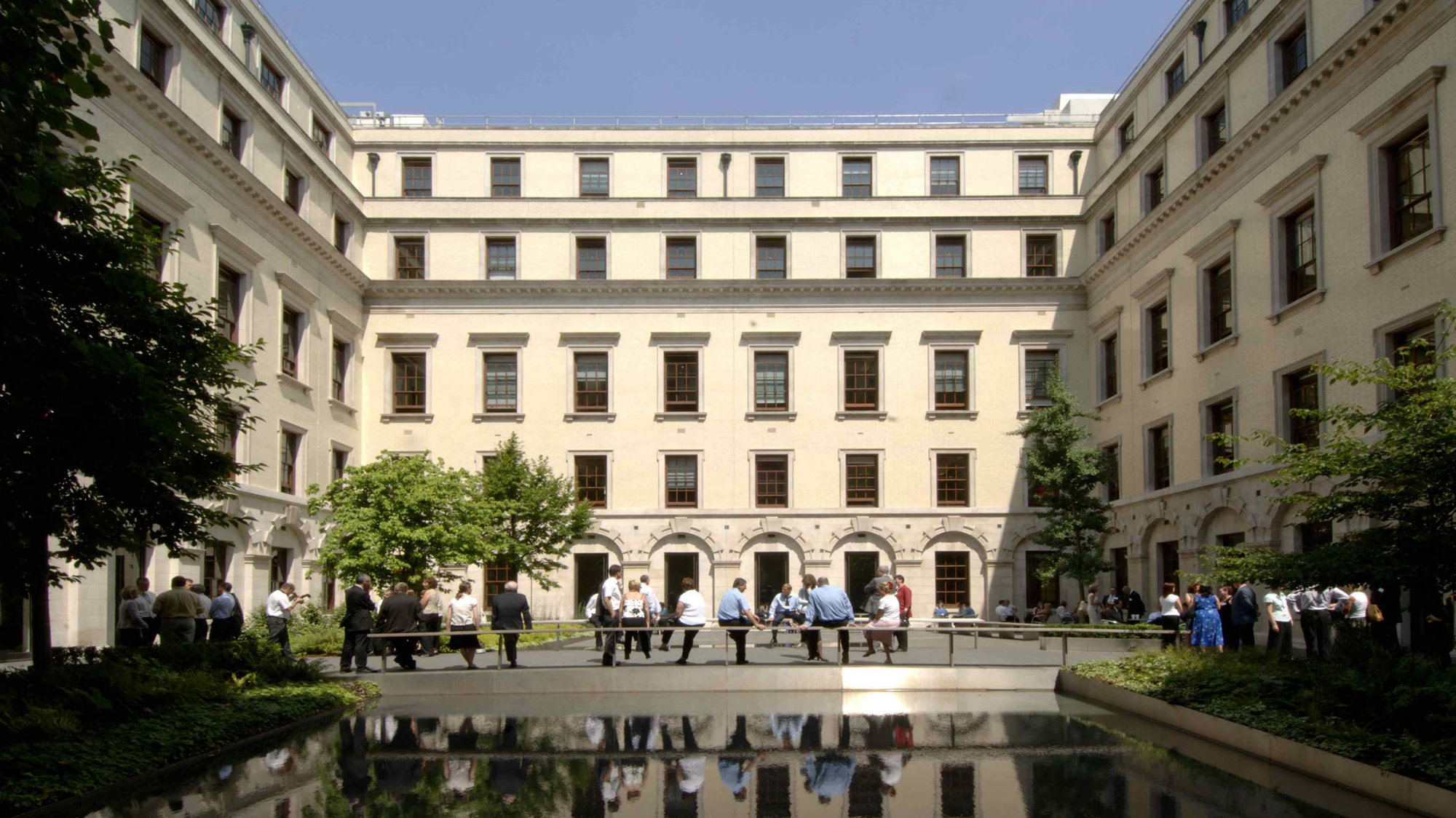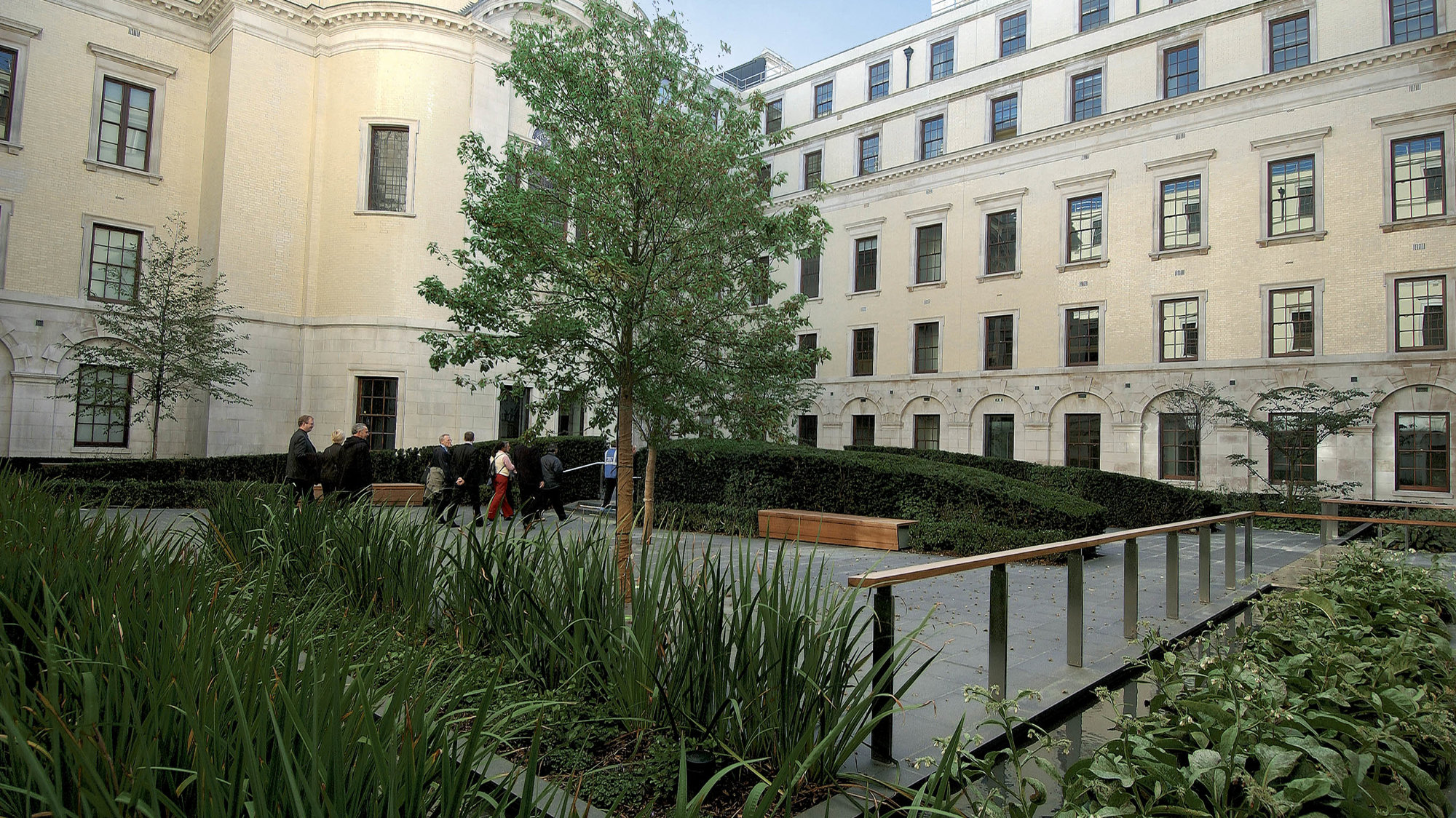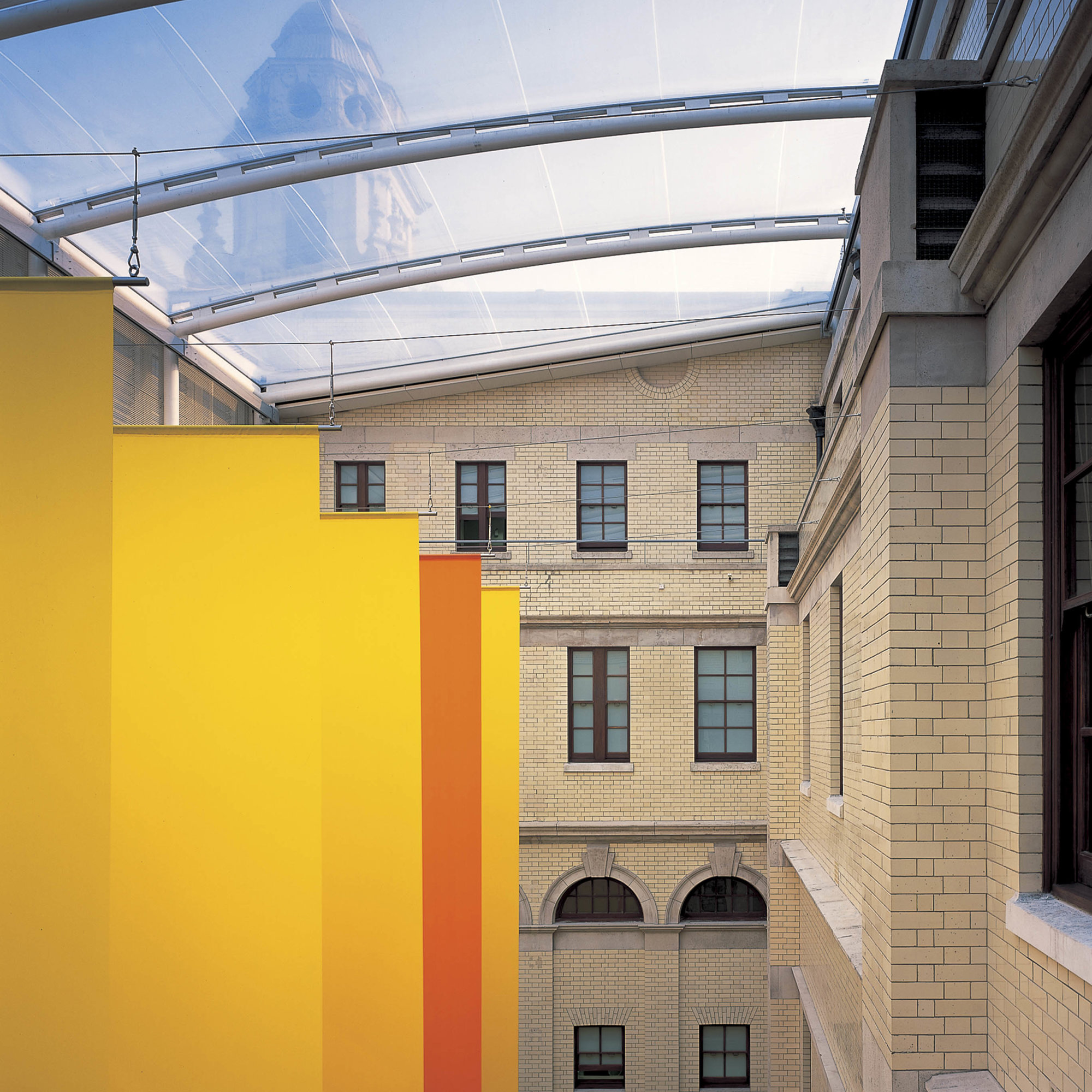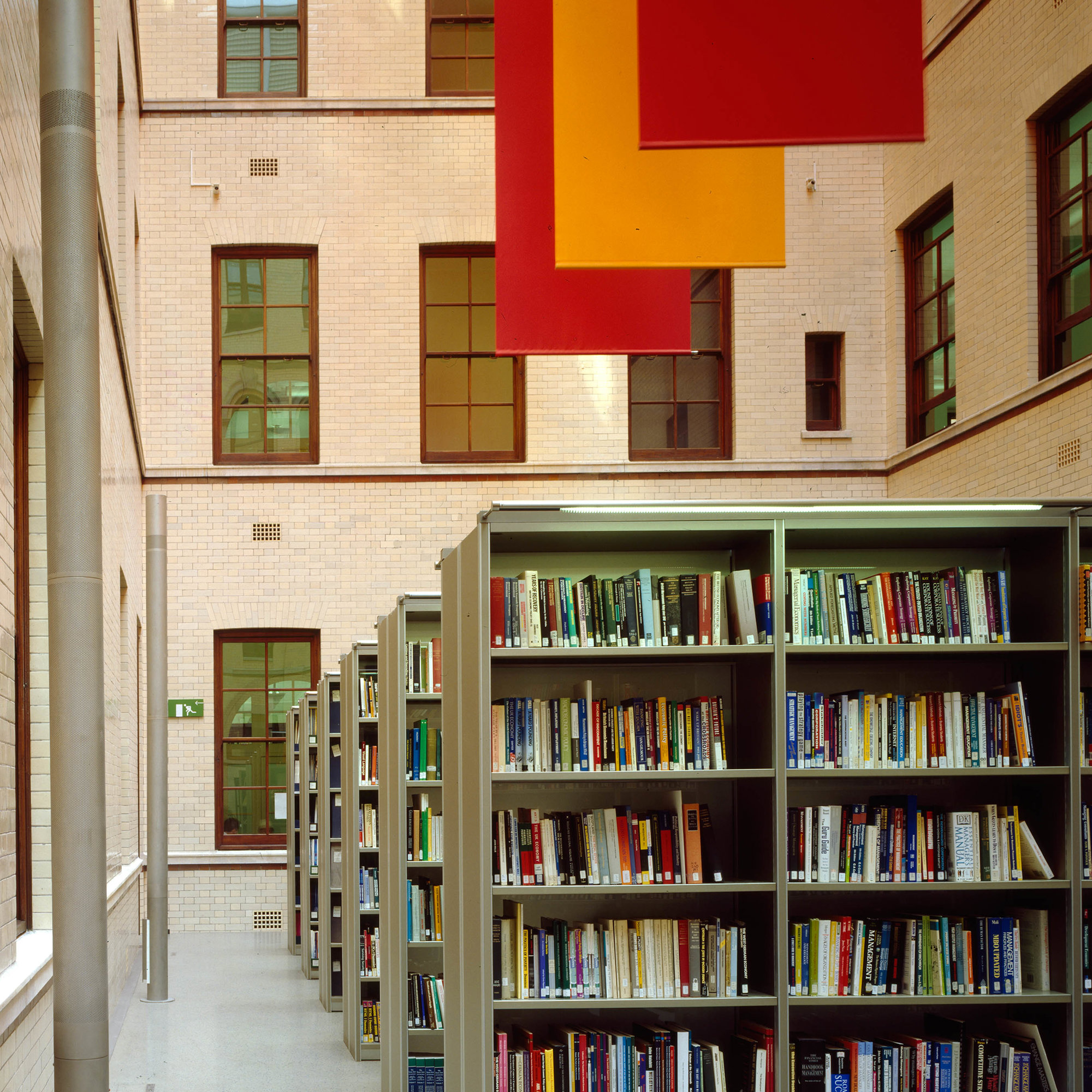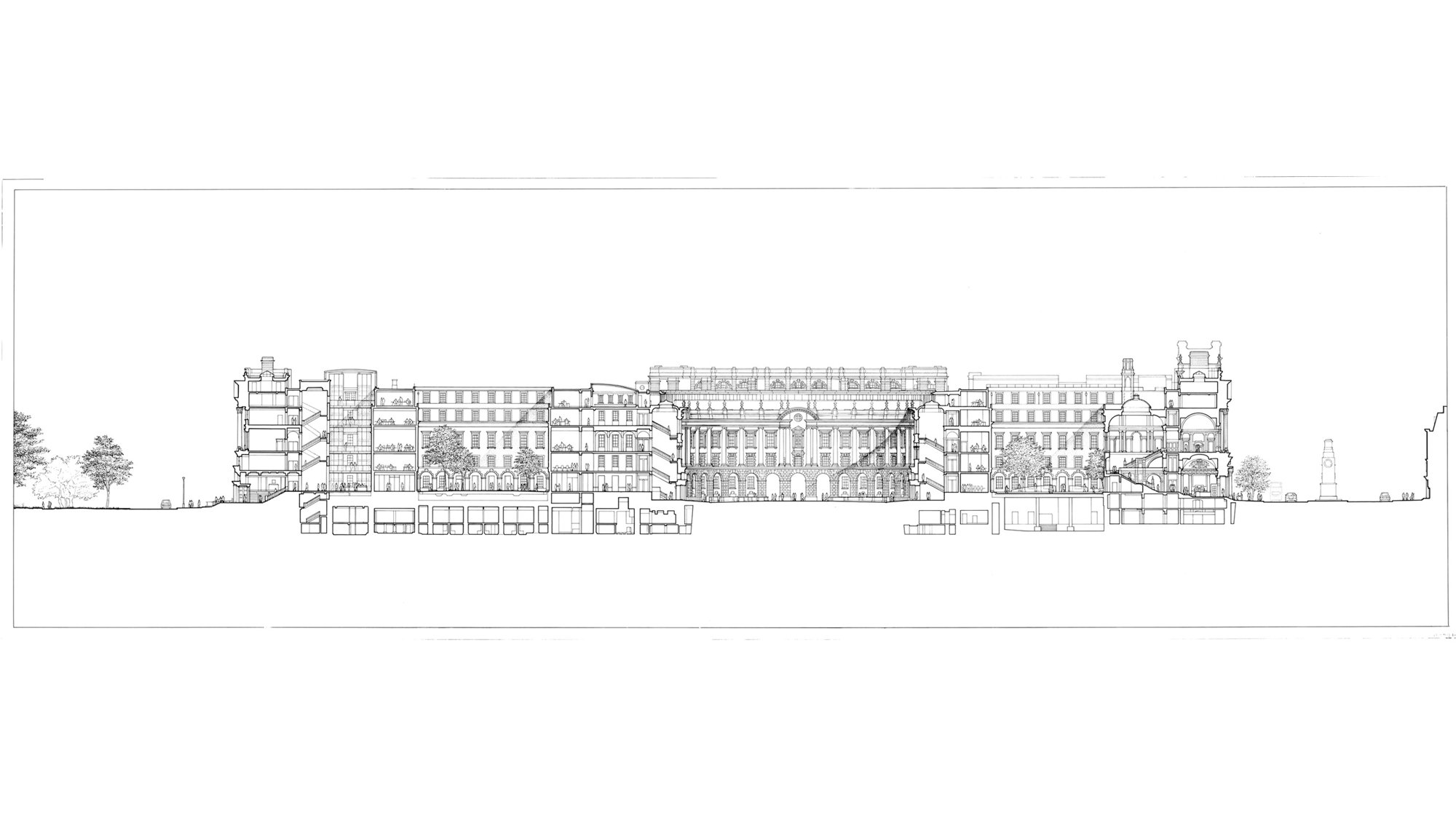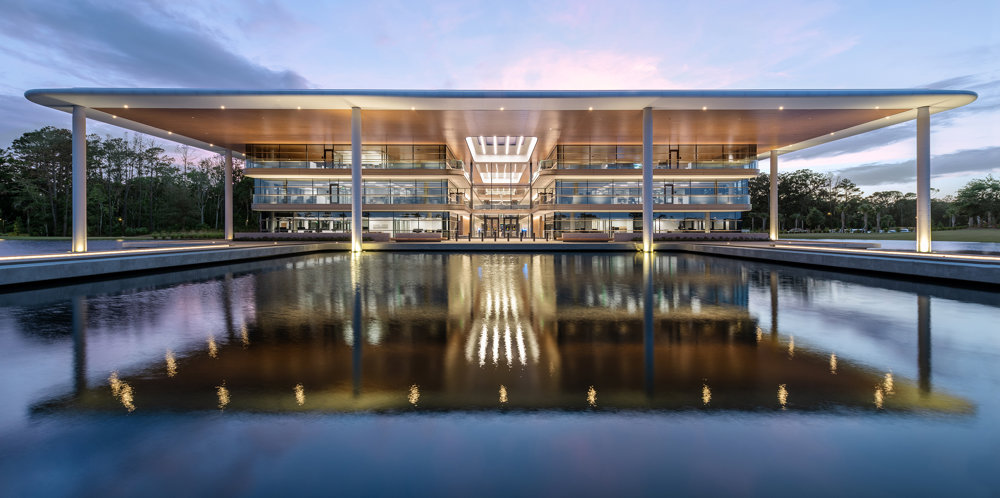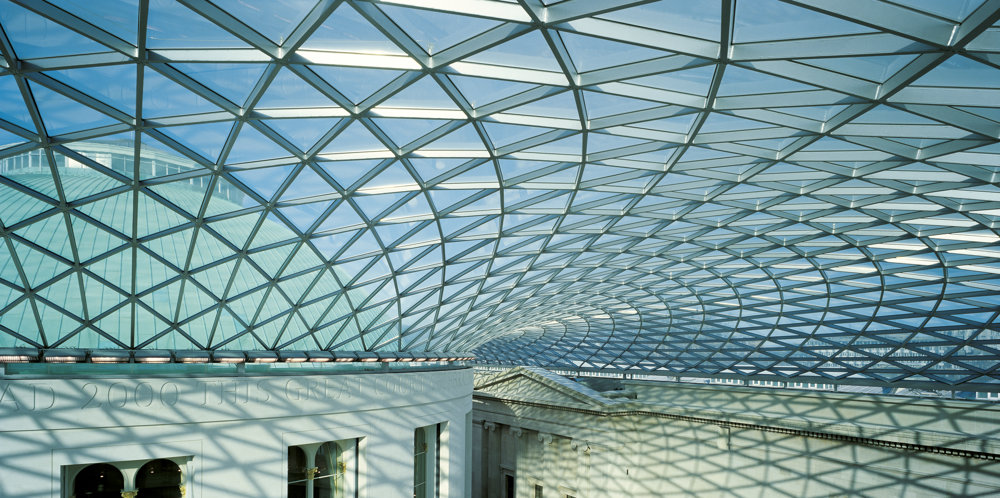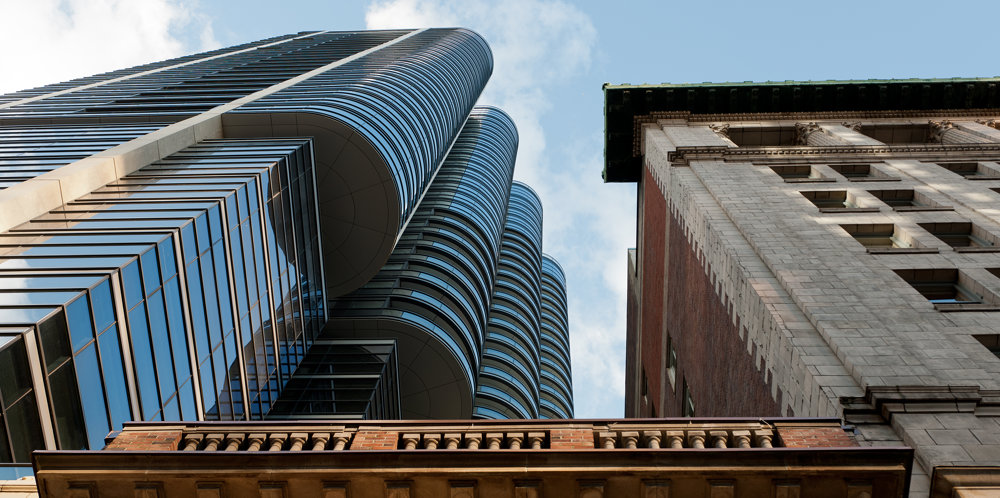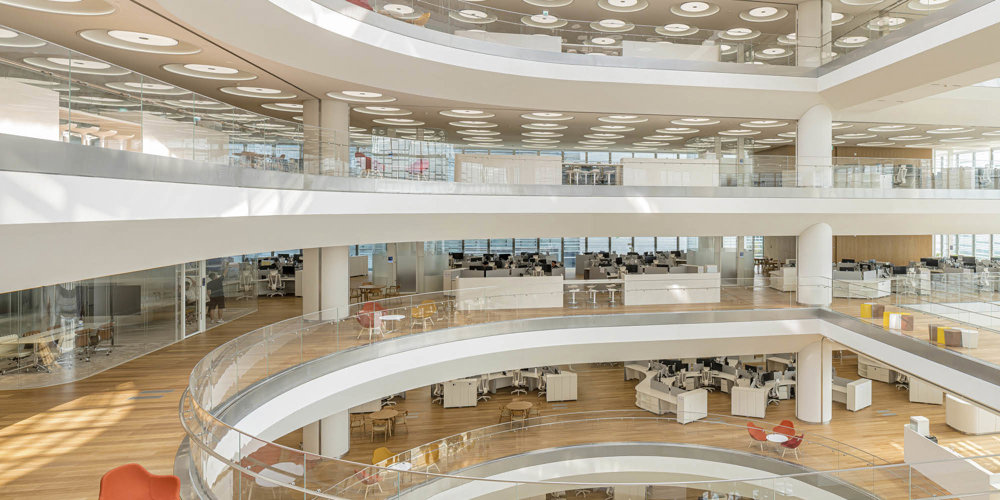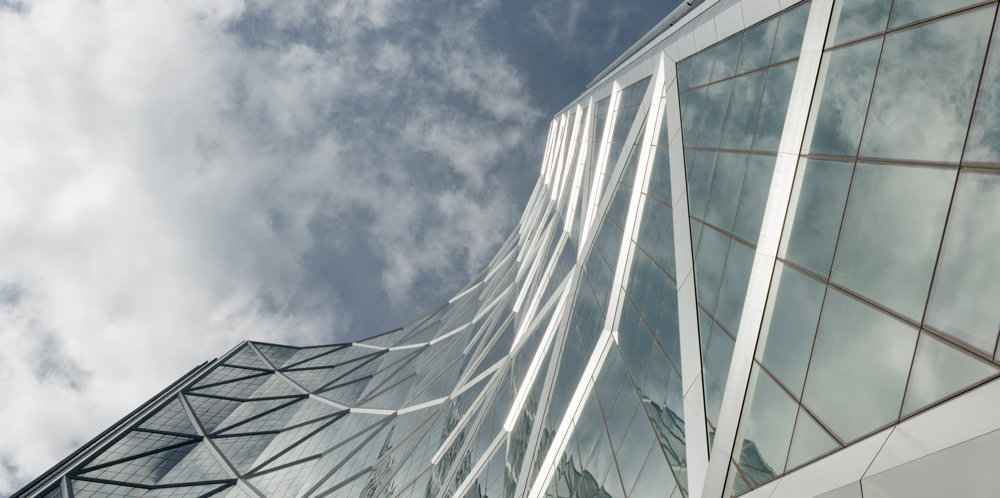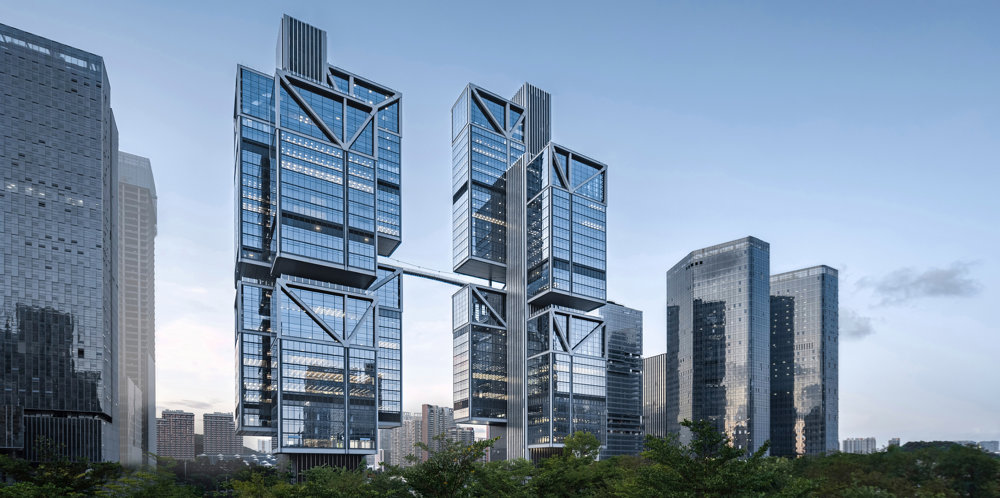Most office buildings dating from the early part of the last century are not ideally suited to modern working practices. However, many of them add to the architectural wealth of our cities and can be restructured to meet contemporary needs. HM Treasury is such a building. Situated between Parliament Square and Horse Guards Parade, it was completed in 1917 and is Grade II listed. In refurbishing the building, the challenge was to transform a labyrinthine and frequently under-utilised set of spaces into an efficient and enjoyable working environment.
The existing building has a roughly symmetrical plan, with two parts linked by a drum-like courtyard. It is punctuated by smaller courtyards and light wells, which were hitherto unused. In an echo of the strategy deployed in the Great Court, some of the courtyards have been capped with translucent roofs to create five-storey spaces that variously house a library, a café, training rooms and an entrance atrium. The external courtyards have been landscaped to form recreational spaces for staff, while the central drum, hitherto used for parking, has been opened up as a new public space. Internally, more than 7 miles of partitions were removed to create open-plan offices. This radical reorganisation has enabled the Treasury to be accommodated comfortably in the western half of the building, allowing the remainder to be occupied by other government departments.
Significantly, this retrofit project has set new environmental standards in Whitehall. The reconfigured light wells help to ventilate the building naturally, forming thermal chimneys through which air from the office spaces is exhausted by vents at roof level. Fresh air is drawn into the building through the windows, which have also been upgraded to provide improved security. This natural ventilation cycle is assisted by ‘wind catchers’ mounted on the roof. Heating, lighting and communication systems have been similarly modernised, so that the building combines a sense of history with a contemporary working environment.










